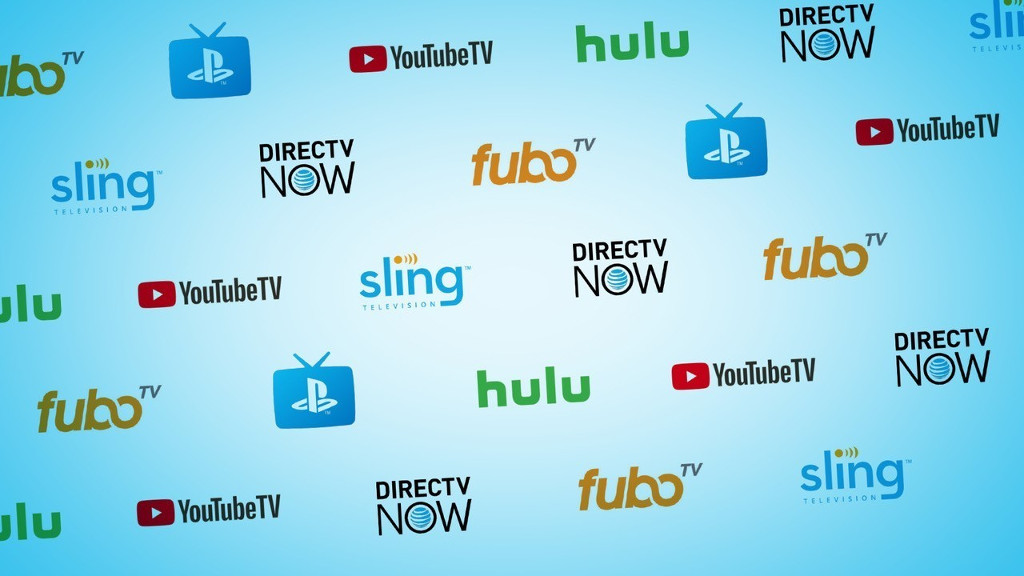Six years ago this month, my household gave up cable TV. We’d been handing over more than $1,600 a year for AT&T’s U-verse service, and in the first year of being cable-free, we spent less than $600 to watch TV.
If you were a cord-cutter looking to save some cash back then, life was good. Today, while it remains possible to spend a lot less on TV, costs are mounting, particularly if you want to keep a cable-like bundle of channels to watch. Two stories from the past week hammer that home.
On Wednesday, Google’s YouTube TV announced a price increase, taking the service from $40 to $50 a month. Much of that increase came from the addition of eight new channels from the Discovery network: Discovery Channel, HGTV, Food Network, TLC, Investigation Discovery, Animal Planet, Travel Channel and MotorTrend. YouTube TV will also add the Oprah Winfrey Network later in the year, and EPIX was added as a premium channel.
YouTube TV now offers more than 70 channels, and as cable companies have been saying for years when they raise prices, all this content doesn’t come cheap. As a result, one of the top alternatives to cable is looking more and more like a cable provider, even in the way it jacks up its rates.
Other players enter the fray
Also Wednesday, T-Mobile finally unveiled its own streaming TV service, dubbed TVision Home. It’s an updated version of product from Layer3, a video provider the wireless carrier bought in 2017. When it formally launches on April 14, TVision Home will offer 150 channels and cost $100 a month. (There’s a $10 initial discount that drops the cost to $90 a month, which will be the regular price for T-Mobile wireless customers.)
TVision Home requires a streaming box, and there are satellite boxes you can rent for another $10 a month to make sure your swankienda has coverage throughout. Of course, you’ll pay extra for premium channels.
TVision Home is available initially in eight markets, and Houston isn’t among them: Chicago, Dallas-Fort Worth, Los Angeles, New York, Philadelphia, San Francisco, Washington, D.C., and Longmont, Colo. More cities will be added this year.
Taking on cable
T-Mobile Chief Executive John Legere has been threatening to take on the cable companies with a product that is as disruptive as his company has been for the cellular business. But TVision looks a lot like plain-vanilla cable service, albeit delivered over the internet. Disruptive, this ain’t.
Given that the mean monthly spending on pay TV is $107 a month, according to the Leightman Research Group, which tracks the cable and broadband business, T-Mobile’s product is barely discernible from the competition. Legere says TVision Home’s prices won’t increase over time, but forgive me some skepticism. As content creators increase the rates they charge TV providers, is T-Mobile really planning to eat those hikes?
PARTY’S OVER: The golden age of streaming is about to end
In fact, prices for many streaming services are on the rise. Netflix recently increased its price from $10 to $12.99 a month for its primary tier. AT&T’s DirecTV Now streaming service went up $10 in March, so its basic tier jumped to $50 from $40 — while the number of channels it offers declined. And Sony’s PlayStation VUE went up $5 in 2018 to $44.99 a month.
Hulu earlier this year lowered the price of its “limited-ads” tier to $5.99 a month, a drop from $7.99, while its ad-free service stayed at $11.99. But Hulu’s live-TV service went up $5 a month to $44.99.
So far, the only faux-cable bundle to resist hiking prices is Dish Network’s Sling TV, which has dropped prices for its two smaller bundles to $15 a month from $25, and a combination of the two is down to $25 a month from $40.
Prices on par
With the average U.S. home broadband bill at $50 a month ($60 a month after promotional prices expire), according to a survey by HighSpeedInternet.com, the total cost of a streaming package with the internet to deliver it approaches the average U.S. cable TV bill of $100.
And the costs to watch everything your heart desires will go even higher. As I wrote in January, the golden age of streaming is about to end as the creators of TV shows and movies start offering their own online services and yank franchise content away from aggregators like Netflix and Hulu. Disney, Comcast and AT&T’s Warner Media will all be rolling out their own services soon.
Disney provided some details about its service on Thursday. Disney+, as it’s called, will launch Nov. 12 and cost $6.99 a month, or $69 if you pay annually. It will highlight Disney’s big-name franchises – “Star Wars”, Marvel’s superhero universe, “Toy Story” and more. Eventually, it will feature Disney’s classic film lineup as well.
YouTube TV Hikes Price to $50 per Month for All Customers After…
Finally, Apple last month announced Apple TV+, which will feature original content crafted by such big names as Steven Spielberg, Oprah Winfrey, J.J. Abrams, Ron Howard and more. Apple didn’t offer any pricing or a specific launch date — heck, it didn’t even show any trailers for its shows during the launch event — but most analysts believe costs will fall into the $30-$50 range. There may or may not be a discount if you subscribe to other Apple services.
So what’s a cord cutter to do? You can still save money dropping cable if you follow these tips:
Don’t try to duplicate cable TV. Just as with traditional cable, you end up paying for a lot of channels you won’t watch. Instead, consider paying for seasons of individual shows you like to watch via Apple’s iTunes or Amazon Prime Video. You’ll spend a lot less, and the shows you get will be commercial-free to boot.
Churn, baby, churn. Most streaming services have no contract, so you can add and drop them at will. That means you can sign up with HBO Now to watch “Game of Thrones”, then drop it once that final season has had its run. The same goes for CBS All Access, which has Jordan Peele’s reboot of “The Twilight Zone.”
Go alternative. Both Netflix and Hulu have some excellent original and non-U.S. content worth watching — in fact, some people saying there’s too much choice there. But at their low-tier prices, they’re an incredible bargain for any cord cutter.
Check the web. Many cable TV channels put their popular shows on the web, free. For example, FX is currently showing its vampire mockumentary, “What We Do in the Shadows,” on its website. You have to sit through some ads, but hey, it costs you only your attention. That’s better than $50 a month, right?





